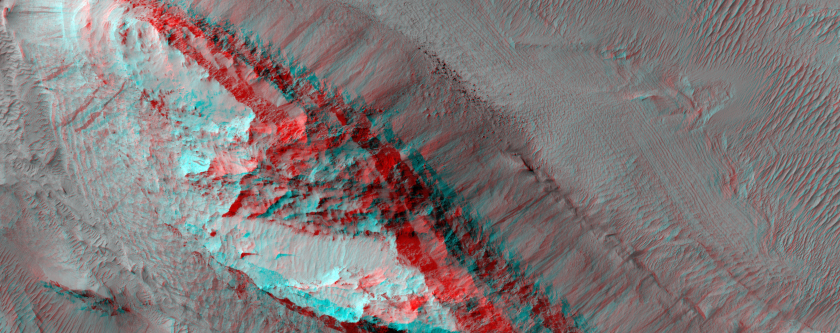Scarp with Yardangs: A dish best served cold on Mars

Mars, our celestial neighbour, continues to captivate scientists with its intriguing landscapes and unique geological features. Among these captivating formations are the aligned ridges known as yardangs. NASA's High-Resolution Imaging Science Experiment (HiRISE) captured this stunning image of a scarp embellished with yardangs - an otherworldly sight that sounds like a dish best served cold on the Red Planet.
Yardangs, which are found in regions where wind erosion is the dominant force, have also been observed on Earth, typically in arid environments. However, the HiRISE resolution allows scientists to closely examine these Martian yardangs and their distinct layers.
The term "yardang" originates from the Uighur language, where it means "steep bank" or "steep wall." These elongated ridges are formed through a process involving wind erosion, wherein strong winds sculpt and erode the softer materials while leaving the harder rocks intact. Over time, this selective erosion results in the formation of the characteristic elongated ridges seen on the Martian surface.
The HiRISE instrument, aboard NASA's Mars Reconnaissance Orbiter (MRO), has been instrumental in capturing detailed images of Mars' surface since its launch in 2005. With its powerful camera, capable of resolving features as small as a coffee table, HiRISE has revolutionized our understanding of the Martian landscape.
In addition to its scientific contributions, HiRISE has also played a crucial role in Mars missions. It has been instrumental in selecting landing sites for rovers like Curiosity and Perseverance and the identification of scientifically significant areas for exploration.
As scientists continue to study enigmatic landforms like yardangs in greater detail, they hope to unravel the complexities of the planet's geological history and the forces that have shaped its surface.
HiRISE 3D: A Scarp with YardangsSounds like a dish! Best served cold on Mars.https://t.co/vIntIZXxWKNASA/JPL-Caltech/UArizona pic.twitter.com/UDEM2PJ8vL
— HiRISE: Beautiful Mars (NASA) (@HiRISE) June 8, 2023
- READ MORE ON:
- NASA HiRISE
- HiRISE Scarp with Yardangs
- Mars Reconnaissance Orbiter










